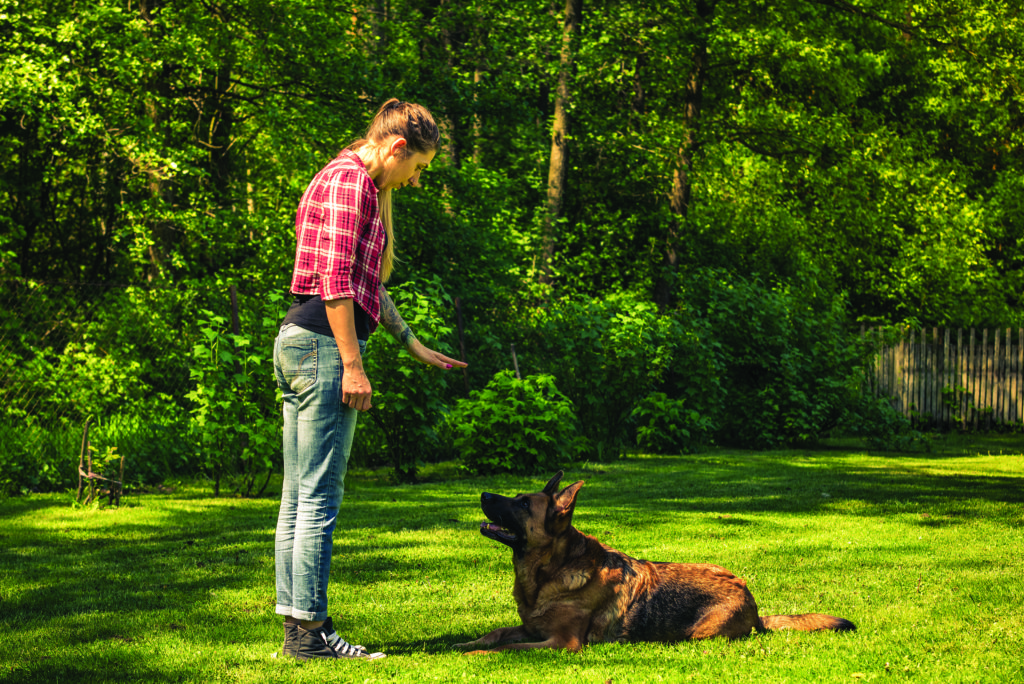/ Published in Unleash Jacksonville The NEW issue, written by Kate Godfrey, owner Comprehensive Canine Training

In 2020, I’d like to change the misconception some may have that positive reinforcement/force-free training is a free-for-all for the dog with no boundaries that relies on bribery. This could not be further from the truth. Positive reinforcement dog training is based on rewarding the behavior you do want. The aim is to make training quick, effective, and pleasant for both parties.
It’s simple—rewarded behavior continues—you get more of what you reinforce.
Part of good training relies on setting the scene up so the dog is highly likely to be successful, instead of putting the dog in a situation in which it’s over threshold, not likely to learn what you want, and ultimately setting them up for failure and punishment.
We control so many aspects of our dog’s world, that preventing unwanted behavior and setting the dog up to succeed is usually rather simple. This is called management—prevent the dog from rehearsing the undesirable behavior by controlling the environment.
Positive reinforcement training isn’t all about rewards. There are boundaries and consequences for making the wrong choice, but these consequences need not be painful or scary. A consequence can be positive, as a means for the dog to gain access to what it wants, or negative in the loss of the opportunity to gain access to what it wants.
All good relationships are built on trust. Trust is earned, it’s not given. By training with positive reinforcement, the dog is taught to trust the handler rather than fear the handler. We give the dog a choice by teaching the appropriate behavior from the start, rather than waiting for them to screw up and implement a punishment that is painful or scary.
Rather than going on and on about what you don’t want the dog to do, answer this question: “What do I want the dog to do instead?” This gives you the power and the opportunity to get what you want. If you can’t determine what it is you’d like the dog to do, imagine how frustrated the dog must be.
With this shift in mindset, you start seeing the opportunities to reinforce the dog for the behaviors you like and ways to prevent the unwanted behavior from occurring. When you start reinforcing the behavior you want, you can expect the dog to start offering more of it. •
 As a veterinarian, I’ve always been interested in behavioral medicine. Over the years as a general practice doctor, I noticed that many patients display fear, anxiety, and stress during their appointments or while boarding. While attending a veterinary conference earlier this year, I learned about the Fear Free Initiative, which is a training program for veterinarians and their staff that teaches low-stress handling techniques and ways to alleviate patient fear at the veterinary hospital. Upon completion of this training program, I was awarded the title of Fear Free Certified Professional. I was elated to learn that implementing these fear-free protocols throughout the clinic at Pet Doctors of America improved my patients’ veterinary experience and helped them get the care they needed without having to experience fear, anxiety, or stress!
As a veterinarian, I’ve always been interested in behavioral medicine. Over the years as a general practice doctor, I noticed that many patients display fear, anxiety, and stress during their appointments or while boarding. While attending a veterinary conference earlier this year, I learned about the Fear Free Initiative, which is a training program for veterinarians and their staff that teaches low-stress handling techniques and ways to alleviate patient fear at the veterinary hospital. Upon completion of this training program, I was awarded the title of Fear Free Certified Professional. I was elated to learn that implementing these fear-free protocols throughout the clinic at Pet Doctors of America improved my patients’ veterinary experience and helped them get the care they needed without having to experience fear, anxiety, or stress!




